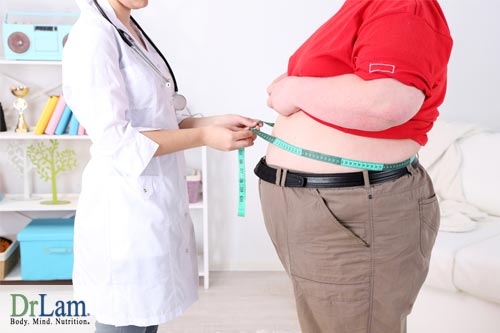 What is the big fat lie? Where is the big fat lie? Why is the big fat lie a big deal? How can I stop the big fat lie? Theses are all great questions, and if you continue reading you will have the opportunity to get them answered. Keep reading to learn more about the big fat lie.When 19th century English carpenter William Banting advanced the low carbohydrate, high-fat diet to lose weight back in 1862, it made headline news. You see, Banting suffered from a life-long history of obesity. He was 5 feet 5 inches tall and weighed in at 202 pounds at age 66. After a relentless search for ways to slim down, he was finally able to shed 46 pounds over 38 weeks. His diet consisted of bacon, beef, mutton, kidneys, fish, vegetables (except potato), tea (without milk or sugar). Conspicuously absent was pastry, grain products, starches, and sugar. Banting died in 1878 at the ripe old age of 81 with normal weight. Banting was so successful with his diet that he published a booklet called the Banting Diet. The medical profession criticized this book as "unscientific". Why would the medical profession reject something that evidently works? The concept of eating meat which contains large amounts of fat to lose weight simply is one that was too advanced for the medical profession then. Since fat has < the most calories per gram, it is logical to limit fat intake if one wants to lose weight. Certainly, this hypothesis appears to make perfect sense on the surface.
What is the big fat lie? Where is the big fat lie? Why is the big fat lie a big deal? How can I stop the big fat lie? Theses are all great questions, and if you continue reading you will have the opportunity to get them answered. Keep reading to learn more about the big fat lie.When 19th century English carpenter William Banting advanced the low carbohydrate, high-fat diet to lose weight back in 1862, it made headline news. You see, Banting suffered from a life-long history of obesity. He was 5 feet 5 inches tall and weighed in at 202 pounds at age 66. After a relentless search for ways to slim down, he was finally able to shed 46 pounds over 38 weeks. His diet consisted of bacon, beef, mutton, kidneys, fish, vegetables (except potato), tea (without milk or sugar). Conspicuously absent was pastry, grain products, starches, and sugar. Banting died in 1878 at the ripe old age of 81 with normal weight. Banting was so successful with his diet that he published a booklet called the Banting Diet. The medical profession criticized this book as "unscientific". Why would the medical profession reject something that evidently works? The concept of eating meat which contains large amounts of fat to lose weight simply is one that was too advanced for the medical profession then. Since fat has < the most calories per gram, it is logical to limit fat intake if one wants to lose weight. Certainly, this hypothesis appears to make perfect sense on the surface.
Clinical trials on obesity, conducted through the last century, fail to support this theory. In fact, the opposite is true. The amount of weight loss appears to be inversely proportional to the carbohydrate content of the food. When a high-fat, lower carbohydrate diet is taken, the rate of weight loss is greater. The converse is also true. Despite this, the medical profession continues to turn its head away from this truth. Many stating that the low-carb, high-fat theory is the big fat lie of diets.
Now let us fast-forward to the year 1972 to understand more about this big lie. This is when cardiologist Dr. Robert Atkins first advanced his "Diet Revolution". In short, Dr. Atkins reiterated and pushed forward the Banting diet. As expected, it was rejected by the medical profession and the public at large. To them, it was an unproven "new concept" still. On the contrary, Americans were just about fully convinced that fats, particularly the saturated fats of meat and dairy products, were the primary nutritional evil in their normal diet. Research studies released during that period also pointed to high blood cholesterol as the number one cause of heart disease, and that a diet high in fat was the number one culprit. This is all part of the big fat lie. The big fat lie that is likely affecting you.
Not so, according to Dr. Atkins. He believed that consuming too many carbohydrates and not fats caused the epidemic of obesity in Americans. Atkins advanced the promise that we would lose weight even if we were to indulge in steak, eggs, and butter to our heart's desire. He believed that fats were harmless and it was actually the carbohydrates, pasta, rice, bagels and sugar that caused obesity and heart diseases. In his book, Dr. Atkins's Diet Revolution, which stirred many emotions among the American population, he allowed his readers to eat animal fat without restriction, to help people to understand the truth about the big lie. However, starches or refined carbohydrates, sugars or anything made from flour were discouraged. He even banned fruit juices, and permitted only a moderate amount of vegetables, although the latter were negotiable as the diet progressed.
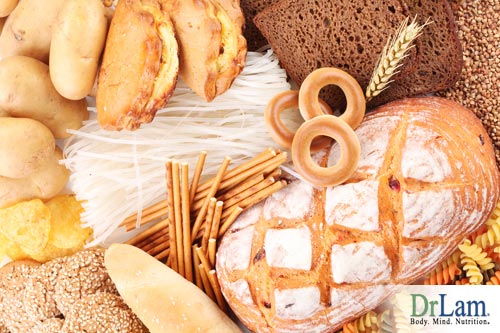 This doctor was determined to learn the truth about the big fat lieDr. Atkins's following was large, and there were so many debates regarding this topic, that Dr. Atkins had to defend his fatty diet in Congressional hearings. His low-carbohydrate message seemed destined to be relegated to the realm of unscientific fantasy and borderline quackery.
This doctor was determined to learn the truth about the big fat lieDr. Atkins's following was large, and there were so many debates regarding this topic, that Dr. Atkins had to defend his fatty diet in Congressional hearings. His low-carbohydrate message seemed destined to be relegated to the realm of unscientific fantasy and borderline quackery.
150 years later, the medical community is still debating this subject. However, the trend is clearly reversing. More researchers are leaning towards the Atkins camp, having seen three decades of reduced cholesterol consumption but exploding obesity. Could Banting and Dr. Atkins have been right all along?
Banting and Dr. Atkins are joined by a growing number of respected scientists who had written decades worth of best-selling diet books, including "The Zone," and "Sugar Busters" telling us that fats are alright. They do not make us fat. The main culprits are actually the refined carbohydrates, such as pasta, rice, and bread, (items that are at the base of the famous Food Guide Pyramid and items that actually provide the main bulk of the calories that our body requires). However, Dr. Atkins says that by eating fewer carbohydrates, we will definitely lose weight and live longer.
Walter Willett, chairman of the department of nutrition at the Harvard School of Public Health agrees. According to him, data collected from a large group study of 300,000 people and costing more than $100 million, clearly contradict the low-fat-is-good-health message. The exclusive three decades focused on the adverse effects of fats, may have contributed to the obesity epidemic because people were told to switch to carbohydrates.
For many people, the low-fat diets are counterproductive for two reasons. Many people switch to low-fat diets using the wrong substitute. They take in excessive carbohydrates such as pasta and potato to replace fats. As a result, this creates a chronic high blood sugar level, leading to obesity, insulin resistance and ultimately diabetes. Such low-fat diets (and resulting high carbohydrate diets) have the paradoxical effect of making people feel more hungry and gaining weight as people are turned into a carbohydrate addict.
The facts are clear. Since the government's promotion of the low-fat dogma in the early 1980s, the rates of obesity have been rising steeply. While Americans have actually reduced their fat intake over the past two decades, the incidence of heart disease still remained high. Obviously, something else is happening. The percentage of obese Americans have remained constant through the 1960's and 1970's at 13 percent to 14 percent. During the 1980s, it suddenly went up by 8 points. Towards the end of that decade, nearly one in four Americans are obese!
This steep rise, which is consistent across all segments of the American society and which continues unabated through the 1990's, is the singular feature of the epidemic. Any theory that tries to explain obesity in America has to account for that. Meanwhile, the number of obese children tripled. For the first time in history, doctors began diagnosing in adolescents. Type 2 diabetes is related to obesity and used to be called adult-onset diabetes. Today, scientists may have to change the name to adolescent-onset diabetes.
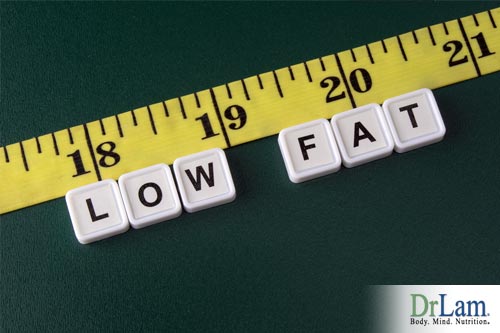 Researcher Ancel Keys was the one who introduced the "low-fat-is-good-health" dogma in the 1950's along with his theory that dietary fat and cholesterol raises blood cholesterol levels and causes heart disease. However, there was no scientific evidence to support his theory for the next two decades.
Researcher Ancel Keys was the one who introduced the "low-fat-is-good-health" dogma in the 1950's along with his theory that dietary fat and cholesterol raises blood cholesterol levels and causes heart disease. However, there was no scientific evidence to support his theory for the next two decades.
The most well-known advocate of the low-fat diet is Nathan Pritikin. With his longevity center located in Santa Monica, California, thousands flocked to his program in the 1970s and 80s. His program consisted of low fat, fresh raw foods, whole grain, and strenuous exercise program. Followers of his program lost weight and had their cholesterol level normalized. Unfortunately, it was found that few could stay on such a diet consistently. The drop off rate is high. The demanding lifestyle change is fitting only to those who have the mental discipline to follow through the long term.
Is the hypothesis of a low-fat diet being good for us a fact or fiction? "Experts" assured us that a low-fat diet is indeed backed by solid scientific proof. Unfortunately, the amount of evidence, supporting the contention that a diet low in cholesterol and saturated fat actually reduces death from heart disease or increases our longevity, is far from solid. Research has shown that eating food with cholesterol only marginally affects the blood cholesterol level. In fact, 80 to 85% of our cholesterol is made by the liver from sugar, while only 15 to 20% is synthesized from dietary fats.
During the 60 year period from 1910 to 1970, the proportion of traditional animal fat in the American diet declined from 83% to 62%, with the most dramatic drop in the past 20 years. Butter consumption dropped from 18 pounds per person per year to 4. In the past 80 years, the total cholesterol intake has increased only 1%. During this same period, dietary vegetable oils in the form of margarine, shortening, and refined oils increased 400%, and the consumption of sugar and processed food increased about 60%. Heart disease rose from an unknown entity a century ago to the number one cause of all death, accounting for almost 40% of all US death. Clearly, dietary cholesterol alone cannot be solely responsible.
The famous Framingham Heart Study is often cited as "solid proof" that a low-fat diet works. It is a longitudinal study started in 1948 and involved 6,000 people from the town of Framingham, Massachusetts. It is found, after 40 years of study, that the more saturated fat one ate, the more cholesterol one ate, and the more cholesterol one ate, the more physically active one became. The study showed that those who weighed more and had abnormally high blood cholesterol levels were more at risk for heart disease. What is most interesting, is that researchers found that weight gain and cholesterol levels had an inverse relationship with fat and cholesterol intake in the diet. On the contrary, the higher the carbohydrate intake, the higher the apparent risk of obesity.
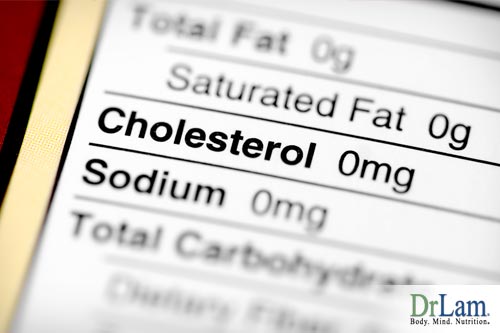 Furthermore, the few studies that were able to indicate a correlation between fat reduction and a decrease in coronary heart disease also document a concurrent increase in death from cancer, brain hemorrhage, and suicide. This is clearly supported by a study conducted by researchers at the University of Hawaii. In this study, researchers followed 3572 Japanese-American men, between the ages of 71 and 93, to study the link between cholesterol levels and mortality rates.
Furthermore, the few studies that were able to indicate a correlation between fat reduction and a decrease in coronary heart disease also document a concurrent increase in death from cancer, brain hemorrhage, and suicide. This is clearly supported by a study conducted by researchers at the University of Hawaii. In this study, researchers followed 3572 Japanese-American men, between the ages of 71 and 93, to study the link between cholesterol levels and mortality rates.
The researchers found that cholesterol levels tended to decline with age from an average of 5.0 mmol/L (195 mg/dL) in those aged 71 to 74 years to an average of 4.61 mmol/L (180 mg/dL) in those older than 85 years. They also observed that study participants who had maintained low cholesterol levels for 20 years or more had the highest mortality of all.
Subjects had their cholesterol levels and numerous other parameters measured in 1991-93. By December 1996 there had been 727 deaths in the group. The researchers found that men with an average total cholesterol level of 5.99 mmol/L (235 mg/dL) had a 35 percent lower mortality rate (adjusted for age) than did men with an average cholesterol level of 3.85 mmol/L (150 mg/dL). The correlation between mortality and cholesterol levels was not changed after adjusting for other variables that could affect mortality rates.
The reality is that studies have shown that a diet high in cholesterol will not lead to high blood cholesterol if the subject is healthy. Blood cholesterol level only increases by 3 mg/dl after ingestion of one egg a day for a continuous period of 6 weeks (one egg contains about 230 mg of cholesterol) in repeated studies. Clearly, dietary cholesterol is not the main culprit.
Now, lets go back to history. While the fat debate continues, the government settled this on its own accord by issuing, in January 1977, the "Dietary Goals for the United States". Everyone was advised to reduce their fat intake to abate an epidemic of "killer diseases" that was supposedly sweeping the country then. This campaign peaked in late 1984 when the National Institutes of Health (N.I.H.) officially announced that all Americans over the age of 2 to consume fewer fats. During this time, fats had become this "greasy killer" worse than the plague.
During this period, the N.I.H. had used several hundred million dollars trying to find a connection between taking fats and heart disease. Sad to say, their efforts failed. Five major studies revealed no such link. However, a sixth, costing well over $100 million alone, concluded that reducing cholesterol by drug therapy could prevent heart disease. These studies had failed to demonstrate at great expense that eating less fat had any significant health benefits. However, if a cholesterol-lowering drug could prevent heart attacks, then a low-fat, cholesterol-lowering diet could theoretically perform the same trick. This logic appears to make sense, but such unsubstantiated correlation is simply not well supported by scientific evidence. Those who are critical of this hypothesis are effectively ignored.
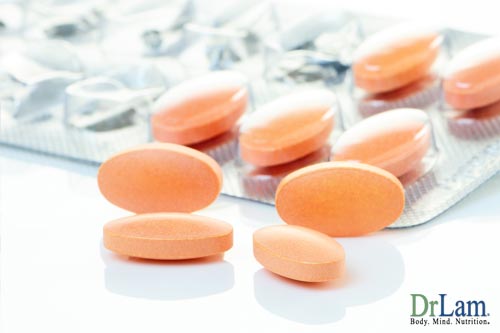 In the past 20 years, cholesterol reducing drugs have become top sellers in the pharmacological industry, generating billions of profit year after year. Recently, the National Heart, Lung, and Blood Institute ( a part of National Institute of Health) has decided that "normal" cholesterol should be lowered in order to "save" more lives. As a result, 20% of all American adults should be taking drugs now to lower their cholesterol level. High cholesterol level is one of many symptoms of increased cardiovascular risk, much like a running nose is a symptom of an underlying viral infection. Forcing cholesterol down with drugs without addressing the underlying cause is akin to prescribing an anti-histamine for a runny nose and declaring that the flu has been cured when the nose stops running. This kind of logic cannot be accepted as "evidence-based" medicine.
In the past 20 years, cholesterol reducing drugs have become top sellers in the pharmacological industry, generating billions of profit year after year. Recently, the National Heart, Lung, and Blood Institute ( a part of National Institute of Health) has decided that "normal" cholesterol should be lowered in order to "save" more lives. As a result, 20% of all American adults should be taking drugs now to lower their cholesterol level. High cholesterol level is one of many symptoms of increased cardiovascular risk, much like a running nose is a symptom of an underlying viral infection. Forcing cholesterol down with drugs without addressing the underlying cause is akin to prescribing an anti-histamine for a runny nose and declaring that the flu has been cured when the nose stops running. This kind of logic cannot be accepted as "evidence-based" medicine.
We now know that while cholesterol-lowering drugs may lead to fewer heart attacks, the mechanism of action may not be related to a lowered blood cholesterol level only. The popular statin class of cholesterol-lowering drugs has, in fact, been shown to reduce inflammatory response in the endothelium (the inner lining of the blood vessel). It may well be that reduction accounts for the cardiac benefit effect. The suppression of cholesterol manufacturing in the liver leading to cholesterol lowering levels may be a less important and a secondary benefit.
Nonetheless, once the N.I.H. joined the bandwagon that low fat is good for you, the food industry began to produce reduced-fat food products to meet the new recommendations. Fat was mainly replaced by another form of sugar, often high-fructose corn syrup and polyunsaturated fats. Unfortunately, such polyunsaturated fats, processed and treated under heat, become hydrogenated. This result is the popularization of a new form of fat called trans fat. Few know how to read and detect this disclosure printed on the nutritional label on boxes of cookies. Trans-fat is known to be one of the strongest carcinogens. Eating too much trans-fat, as in cookies and French fries has been linked to the ever-rising incidence of cancer.
While the low-fat diet was being promoted in the past 20 years as the longevity diet, astute investigators continued to question the basic lipid hypothesis: Is there a direct relationship between the amount of saturated fat and cholesterol in the diet and the incidence of heart disease originally proposed by Ancel Keys?
Let us look at some of the epidemiological studies that challenge this lipid hypothesis:
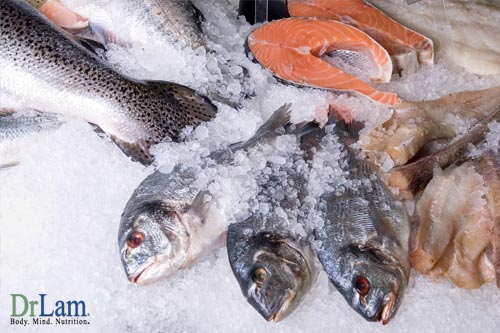 Eskimos are relatively free of heart disease. They eat animal fats from fish and marine animals liberally.
Eskimos are relatively free of heart disease. They eat animal fats from fish and marine animals liberally. Clearly, the low-fat, low cholesterol hypothesis is not as good as it sounds. What then, causes the ever-rising rate of heart disease? Many cutting edge researchers are pointing their fingers at carbohydrates. Let us take a closer look.
Some students of historical endocrinology and metabolism have noted that man was not born to eat a diet high in starches or sugars. Grain products and concentrated sugars were absent from human nutrition until the invention of agriculture, which was only 10,000 years ago. Without the advent of and popularization of grains such as wheat and rice as part of a staple diet, humans would not have survived multiple famines throughout history and there would not have been a "population explosion". This fact has often been discussed in the anthropology textbooks but is absent from the obesity literature, with the exception of the low-carbohydrate-diet books.
Until the late 70's, most people still believed that fats and proteins protected against overeating by making you sated, and carbohydrates made you fat. Up to the 70's, we can still find many articles describing the high rates of obesity in Africa and the Caribbean whose diets are exclusively carbohydrates.
All carbohydrates are broken down into sugar inside the body. It is the rate and the amount of this dissolution that determines the level of sugar in the blood. Complex carbohydrates such as whole vegetables, whole grain products, legumes, and fruits break down slowly, thus causing a gradual rise in blood sugar when first taken in and a gradual fall in blood sugar when absorbed. Generally speaking, most complex carbohydrates are considered good for health.
On the other hand, simple carbohydrates such as cakes, sweets, candies, soft drinks and cookies break down quickly once inside the body. This causes rapid spikes in the blood sugar levels and subsequent valleys when the sugar is quickly absorbed. This creates a roller-coaster effect damaging to many cellular functions. Excessive consumption of simple carbohydrates is detrimental to our health.
This simple and easily comprehensive classification of carbohydrates is incomplete. While most simple carbohydrates are harmful because of their rapid breakdown rate into glucose after ingestion, some complex carbohydrates such as potatoes, rice, and wheat products are high in starch (long chain glucose). Such starchy foods are not healthy because of their relatively fast rate of breakdown into simple carbohydrates and thus raising the blood sugar levels quickly. 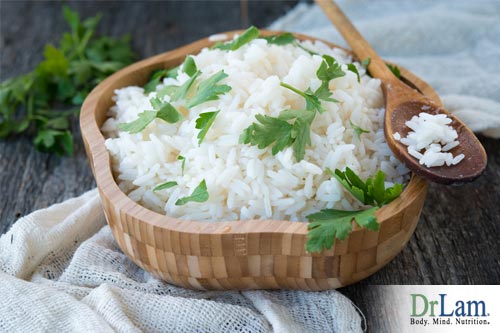 These starchy foods are the main culprits of a high carbohydrate diet heavily promoted during the past 20 years. Thirty years ago, our understanding of carbohydrate metabolism was still in its infancy stage; its link to fat was still being debated. Today, we know that carbohydrate turns into sugar once inside our bodies, and excessive sugar is turned into glycogen and ultimately fat.
These starchy foods are the main culprits of a high carbohydrate diet heavily promoted during the past 20 years. Thirty years ago, our understanding of carbohydrate metabolism was still in its infancy stage; its link to fat was still being debated. Today, we know that carbohydrate turns into sugar once inside our bodies, and excessive sugar is turned into glycogen and ultimately fat.
As mentioned earlier, the amount and rate of carbohydrate clearance are highly dependent on the amount of insulin the pancreas secretes. Within a few minutes after the start of a meal, insulin is released. Insulin's function is to move the glucose from the bloodstream to the cell. When the blood glucose drops, the level of insulin also drops, signifying that it has completed its function. This drop in insulin also results in the release of a brain chemical called serotonin. Serotonin produces a feeling of satisfaction and we stop eating. This is the brain's signal to us that we are full. Several hours after a meal, the insulin-to-glucose changes. The body has been using some of the glucose that remains in the blood for energy. This change in ratio results from a drop in glucose but an even more dramatic drop in insulin. The low insulin level signals the body to eat again. This signal is recognized as the sensation of hunger. In fact, some called insulin the hunger hormone.
In some people, this process went awry. Specifically, there is an over-release of insulin more than what is needed immediate after a meal high in carbohydrate. This leads to a high insulin level in the blood, even after glucose is cleared from the bloodstream into the cell. If another meal high in carbohydrates is consumed (or a snack) within the next 2 hours, insulin is released again. At the meantime, the higher than normal insulin level from the first meal is still high and has yet to be normalized. Combining the insulin levels of the high carbohydrate meal and a high carbohydrate snack (like a cake, donut, and soda) back to back within a couple of hours, the blood insulin level remains high and fails to drop. With a high insulin level, the brain is tricked into thinking that the body is still eating and is not yet full. As a result, the brain levels of serotonin fail to rise, and there is no signal to stop eating. This continuous vicious cycle of over-eating forms the physical basis of what is called a carbohydrate addict, according to researchers Dr. Rachael and Richard Heller, professors of New York's Mount Sinai School of Medicine.
According to Dr. Richard and Rachael Heller's book, Carbohydrate Addict: "Carbohydrate addicts recognize the desire to eat isn't logical because they know they're not really hungry in the sense of requiring nourishment. But the drive to eat is hard to deny. You may find yourself eating out of habit, almost unconsciously satisfying a compulsion. 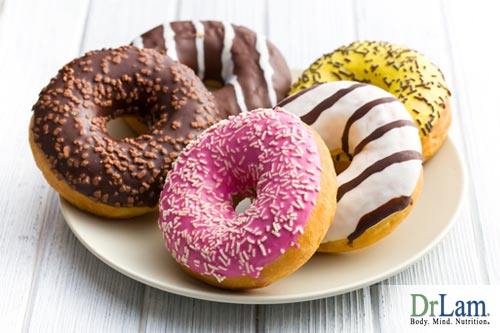 You may snack, realizing to our surprise that you are eating out of boredom or to relieve stress. Many carbohydrate addicts report that their cravings grow stronger each time they eat carbohydrate". In other words, the carbohydrate-insulin/carbohydrate-serotonin connection has gone awry.
You may snack, realizing to our surprise that you are eating out of boredom or to relieve stress. Many carbohydrate addicts report that their cravings grow stronger each time they eat carbohydrate". In other words, the carbohydrate-insulin/carbohydrate-serotonin connection has gone awry.
If you are overweight and have many of the symptoms below, consider yourself a carbohydrate addict.
In addition to the above, a high sugar intake in a simple carbohydrate and starchy diet leads also to an increased risk of heart disease. Excessive simple sugars lead to a high insulin state which, in turn, is the primary trigger of high triglycerides, a type of blood fat, and very low-density lipoproteins (VLDL). We will look at the mechanism of action in more detail later. Suffice to say that both triglyceride and VLDL are independent risk factors for atherosclerosis. In addition, sugar lowers good HDL cholesterol, raises bad LDL cholesterol, resulting in a rise in total cholesterol. It is estimated that a high sugar intake may account for as many as 150,000 premature deaths from heart disease in the US each year.
Many studies have been conducted to support this. In one research trial, 18 male subjects received normal food followed by a rigorously specified diet in which proteins and carbohydrate requirements were met by amino acids, essential fats, and glucose. The average concentration of cholesterol in the initial period when taking normal food was 227 mg/dl. After two weeks on the restricted glucose diet, it fell to 173. Another two weeks later, the level was at 160. However, when the subject's diet was changed, by replacing 25 percent of the glucose with sucrose (while all other dietary constituents kept constant), the average cholesterol level rose from 160 to 178 within one week and to 208 within two weeks. Subsequently, the researchers then replaced glucose with sucrose again. With this change, the cholesterol concentration fell back to 175 within one week and the decline continued. It finally leveled off at 150 mg/dl, which was 77 mg/dl less than the initial value. This research concluded a relationship between the consumption of sucrose (table sugar) and an increase in cholesterol.
A high carbohydrate diet that has been consumed over a long time can lead to a state of insulin resistance (also called Syndrome X) that now afflicts over 60 million Americans. A high blood insulin level is characteristic of this state. The high insulin turns on the liver to make more VLDL. VLDL is a main carrier of triglyceride. VLDL is further metabolized into LDL. The result - high triglyceride, high LDL cholesterol, and low HDL cholesterol (which will be explained later). Circulating fats such as LDL cholesterol, when oxidized, can cause massive damages to the endothelial wall of blood vessels, leading to an inflammatory response that cumulates with the formation of fatty streaks and ultimately plaques in a process we call atherosclerosis.
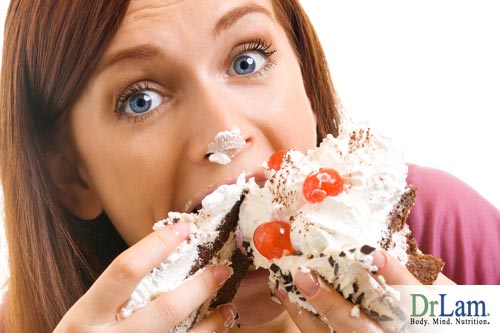 Clearly, the destructive role of carbohydrates has not been fully elucidated before the public is asked to indulge in this 20 year exercise of slow suicide. It is now clear that excessive refined carbohydrates can be equally, if not more, destructive than excessive saturated fat. Perhaps it should be made more clear - excessive intake of harmful carbohydrates such as cakes, sweets, potatoes, white bread, and pasta are the main culprits behind the rise in obesity and cardiovascular disease despite a drop in dietary saturated fats over the past 20 years.
Clearly, the destructive role of carbohydrates has not been fully elucidated before the public is asked to indulge in this 20 year exercise of slow suicide. It is now clear that excessive refined carbohydrates can be equally, if not more, destructive than excessive saturated fat. Perhaps it should be made more clear - excessive intake of harmful carbohydrates such as cakes, sweets, potatoes, white bread, and pasta are the main culprits behind the rise in obesity and cardiovascular disease despite a drop in dietary saturated fats over the past 20 years.
As our knowledge of carbohydrate metabolism increases, our understanding of how fats affect our bodies have grown exponentially. Let us now look at the metabolism of fats more closely.
Our bodies need the energy to function 24 hours a day. The source of this energy, however, varies greatly. Before breakfast, glucose from the liver, amino acids from the muscle and fatty acids from fat cells provide energy. During and shortly after a meal, the energy generation system reverses. The food taken in serves as the new source of energy. As food is digested, glucose from carbohydrate breakdown and amino acids from protein breakdown become the primary source of energy. The liver stops releasing glucose for energy and instead stores the excessive glucose from food as glycogen for later use. The fat cells also store newly absorbed fats for later use. A hormone called insulin, which is secreted by the pancreas, regulates this process. Normally, this function operates like clockwork a few times a day, maintaining a tight control on our metabolism and regulating our energy generation and fat storage cycles.
Let us now look more closely into the way fats are metabolized. After a meal, digestive enzymes from the pancreas are secreted directly into the small intestines. These enzymes consist of those that break down fats (lipase), starch and sugar (amylase), lactose (lactase), protein (protease). Fats, in this process, are broken down into fatty acids. Next, the cells lining the small intestine absorb these fatty acids and convert them into triglycerides. Triglycerides are comprised of three fatty acids attached to a glycerol molecule. They are also known as blood fats, which are the transportable and stored form of fats.
During this period, the intestinal cells also produce small amounts of cholesterol and protein. When combined with the triglyceride, they form chylomicron, which is the fat-soluble "transport vehicles' that can transport the fats through the bloodstream.
Chylomicrons are one of four major classes of fat-protein packages called lipoproteins. The other lipoproteins are very-low-density lipoproteins (VLDL), low-density lipoprotein (LDL), and high-density lipoprotein (HDL). Lipoproteins are differentiated by how much triglyceride they contain. The more triglyceride within these particles, the less dense they are and the more they "float". Chylomicron contains the most triglyceride, followed by VLDL and LDL. HDL contains the lowest amount of triglyceride.
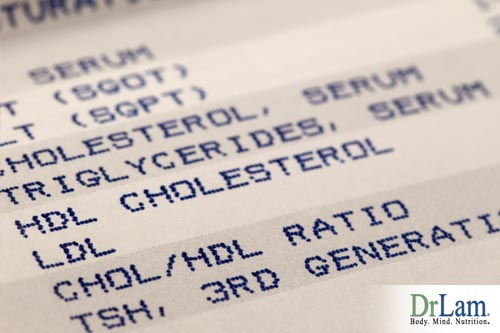 As chylomicron circulates within the bloodstream, another enzyme called lipoprotein lipase, secreted from the endothelium, breaks down the triglyceride of the chylomicron further into fatty acid plus glycerol again. Fatty acids are then absorbed and carried into the fat cells and converted into triglyceride and stored for later use. What's left of the chylomicron is poor in triglyceride. These are called chylomicron remnants and are, subsequently, removed from the bloodstream by the liver.
As chylomicron circulates within the bloodstream, another enzyme called lipoprotein lipase, secreted from the endothelium, breaks down the triglyceride of the chylomicron further into fatty acid plus glycerol again. Fatty acids are then absorbed and carried into the fat cells and converted into triglyceride and stored for later use. What's left of the chylomicron is poor in triglyceride. These are called chylomicron remnants and are, subsequently, removed from the bloodstream by the liver.
This process of fats breaking down into fatty acids and then recombining them to form triglyceride, packaging them into chylomicrons, and breaking down the chylomicrons is an on-going process that never ends.
During meals and shortly thereafter, our main source of triglyceride are chylomicrons, the blood-fat carriers. When we are sleeping, VLDL becomes our major source of triglyceride-rich lipoprotein. VLDL are very much like chylomicrons, except that they contain a little less triglyceride. However, primarily muscles and not fat tissue take up the fatty acid released from VLDL. This is an important distinction. Fatty acid released by the chylomicron is taken up mostly by fat cells, while fatty acids released by VLDL goes into the muscle cells. Furthermore, as the VLDL loses its triglyceride, the resulting VLDL remnants, instead of being removed in the liver as in the case of chylomicrons, is partially converted into LDL. The higher the LDL, the more likely it is that an excess amount of oxidized LDL cholesterol will be deposited into the endothelium, where fatty streaks and eventual plaque formation begins.
Scientific evidence has proven that a diet rich in refined carbohydrates such as white bread and cakes, or starchy foods such as pasta, potato, and rice breaks down into sugar quickly. Excessive intakes will lead to an elevated blood sugar, especially after a meal. This type of diet will result in an increase of insulin secretion from the pancreas, as the body tries to restore the blood sugar down to a normal level. Insulin, in addition to its glucose-lowering duty, will stimulate the liver to make more triglyceride and VLDL. One of the most important factors, that determine how much triglyceride your liver makes, are the daylong levels of insulin (an indication of the amount of carbohydrate you take) and fatty acids in your blood. The higher the insulin, the faster the assembly line of triglyceride production occurs in the liver from fatty acids and glycerol. A high insulin level also causes the fat cells to release more fatty acid from storage, making more fatty acids available for the liver to produce triglyceride. Concurrently, chronic high blood sugar can lead to a state of insulin resistance, which in turn leads to an abnormal increase in blood insulin level. This high insulin blood level triggers the liver's production of triglyceride even further. In the Quebec Cardiovascular Study, it was found that for each 30% increase in insulin levels; there was a concurrent 70% increase in the risk of heart disease over a five-year period. Carbohydrates increase sugar, and sugar increases insulin. It is therefore very important to normalize insulin levels by modulating carbohydrate intake.
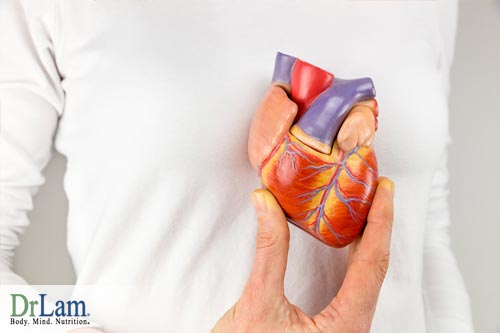 In addition to increased triglyceride production, a high insulin level also stimulates the liver to produce a large quantity of VLDL as well. This is the triglyceride carrier. When a high VLDL is released into the bloodstream, it raises the blood triglyceride concentration, causing an increasing risk of coronary heart disease. A high VLDL, in turn, leads to a high LDL, as LDL is a metabolite of VLDL. In this respect, we can now understand how a diet high in carbohydrates can lead to a rise in blood triglyceride and the "bad" LDL cholesterol. A diet high in saturated fats (commonly found in red meat) also increase triglyceride levels leading to an increase in "bad" LDL cholesterol. In other words, both an intake high in carbohydrates or saturated fats will lead to increased triglyceride production.
In addition to increased triglyceride production, a high insulin level also stimulates the liver to produce a large quantity of VLDL as well. This is the triglyceride carrier. When a high VLDL is released into the bloodstream, it raises the blood triglyceride concentration, causing an increasing risk of coronary heart disease. A high VLDL, in turn, leads to a high LDL, as LDL is a metabolite of VLDL. In this respect, we can now understand how a diet high in carbohydrates can lead to a rise in blood triglyceride and the "bad" LDL cholesterol. A diet high in saturated fats (commonly found in red meat) also increase triglyceride levels leading to an increase in "bad" LDL cholesterol. In other words, both an intake high in carbohydrates or saturated fats will lead to increased triglyceride production.
In learning more about concerning related components to the big fat lie, we learn that the role of triglyceride as a marker of cardiovascular disease cannot be over-emphasized. A diet high in saturated fats, such as red meat, is not the only diet that raises serum triglyceride level. It is more important to note that, a diet high in simple carbohydrates and starchy food (such as sugar, rice, and wheat respectively) can raise serum triglyceride drastically through insulin. Only 20% of the ingested sugar load can be burned or stored as glycogen at any one meal. The remainder 80% will be converted to triglyceride which can contribute to the buildup of acidity, or stored as fat deposits.
A high triglyceride blood level is a strong and independent risk factor for heart attacks among middle-aged and elderly men. In fact, studies have shown that blood triglyceride level is a stronger risk factor than for total cholesterol alone. It is not known as to why women appear to be more immune to this other than postulations that the high level of estrogen may be acting as a protective factor. In this respect, the exact mechanism is still under investigation.
It is naive to think that taking complex carbohydrates like fruits (high in fructose and glucose) instead of simple carbohydrates like cakes will reduce the level of sugar and reduced triglyceride level. This has been proven wrong. Fruits actually contain fructose which has the similar effect as glucose and sucrose contained in cakes, although the speed of breakdown of fructose is slower than glucose. The net result is very similar. Fruit, however, does offer a variety of other benefits, including fiber and antioxidants. Switching from cakes to high sugar content fruits such as watermelons will not bring down the triglyceride level.
In a clinical trial conducted at the University of Minnesota, researchers reviewed 24 healthy adults who received one of two types of diets assigned randomly for a period of 6 weeks. After 6 weeks, the subjects were switched back to the other diet. The first diet provided 17% of energy as fructose and the other diet was sweetened with glucose and did not contain any fructose. 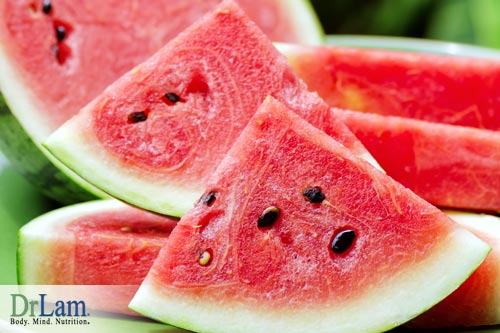 Both diets contained common foods and nearly identical amounts of the macronutrients. The results showed that in men, the fructose diet raised plasma triglyceride levels by 32% from baseline, although interestingly there was no effect seen with the women being studied.
Both diets contained common foods and nearly identical amounts of the macronutrients. The results showed that in men, the fructose diet raised plasma triglyceride levels by 32% from baseline, although interestingly there was no effect seen with the women being studied.
While the "normal" upper limits of blood triglyceride level can be as high as 160 mg/dl, the appropriate goal for optimum health should not be higher than 100 mg/dl, with a total triglyceride to HDL cholesterol level of no higher than 3 (preferably under 2).
Studies have shown that a triglyceride count of 100 mg/dl above normal levels increases the relative risk of a new cardiovascular event by 50% and reduces the chance of surviving a subsequent heart attack.
High levels of triglyceride are related to a dietary intake of simple carbohydrate such as cakes and white bread and starchy food such as pasta, rice and potatoes. It can be elevated in a diet high in saturated fats, but the correlation is less dramatic when compared to that of a carbohydrate diet. As such, we can solve this high triglyceride level problem by changing our diet. We should be able to see a steady decline in the triglyceride level within a few weeks if a proper low glycemic anti-aging diet is followed.
The role of triglyceride has been under-appreciated for the past 30 years. Today, nutritional scientists realize that triglyceride is in fact the key link that connects carbohydrates to obesity, and not dietary fats or dietary cholesterol. As such, the dominant factor of high triglyceride is carbohydrates and not fats. In other words, a high triglyceride level is almost synonymous to a high carbohydrate diet and not a high fatty diet.
Let us now look at how simple and refined carbohydrates such as white bread and white flour, or starchy carbohydrate foods such as potatoes and rice, can increase your risk of heart disease. Both are considered "bad".
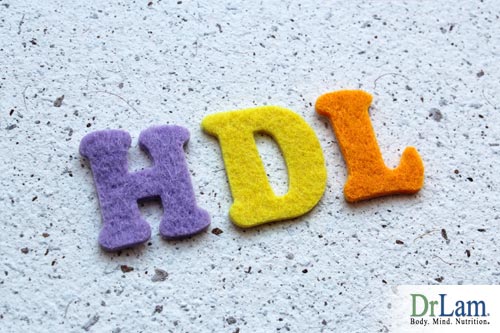 Cholesterol can be transferred between the "good" HDL cholesterol and "bad" LDL cholesterol by an enzyme called cholesteryl ester transfer protein (CETP), exchanging the "good" HDL cholesterol for triglyceride. With more triglyceride-rich VLDL, more cholesterol CETP will transfer from your HDL to your VLDL, thus lowering the HDL level. With less HDL and more VLDL, the risk of heart disease will go up.
Cholesterol can be transferred between the "good" HDL cholesterol and "bad" LDL cholesterol by an enzyme called cholesteryl ester transfer protein (CETP), exchanging the "good" HDL cholesterol for triglyceride. With more triglyceride-rich VLDL, more cholesterol CETP will transfer from your HDL to your VLDL, thus lowering the HDL level. With less HDL and more VLDL, the risk of heart disease will go up.Today, few experts now deny that the low-fat message of the past 2 decades is radically oversimplified. If nothing else, it effectively ignores the fact that unsaturated fats like olive oil is full of omega-3 fatty acid and is good for you. These fats will raise your good cholesterol, high-density lipoprotein (HDL), and lower your bad cholesterol, low-density lipoprotein (LDL). The higher LDL raises your heart-disease risk, the higher HDL reduces it.
In an important study published in one of the most respected medical journals in America, the New England Journal of Medicine, researchers revealed an interesting fact that a low-fat diet high in carbohydrates, fiber, legumes and low in red meat may not reduce total cholesterol levels and lower the risks of cardiovascular disease (CVD) and colon cancer.
Yes, it's about time that physicians and people alike wake up to the reality that simply following a low-fat diet high in fiber, as promoted in the past 20 years, is unlikely to lower elevated lipids (cholesterol, triglycerides, etc) or prevent CVD. Government dietary recommendations and many prepared foods ought to be changed if the desired goal is to reduce the risk of CVD. The best strategy for maintaining healthy lipids and preventing CVD is to eat natural foods rich in essential fats and eat fewer calories (only as much as needed to maintain ideal weight).
The Mediterranean diet is a good example to follow. Avoiding fats are not necessarily healthy, particularly if it means avoiding essential fats. However, we should avoid highly processed fats such as stick margarine and refined carbohydrates such as cakes, as they release free radicals and lead to many harmful effects in addition to the excessive calories.
Fats can be divided into four major groups. They are:
Monounsaturated fats - such as olive, peanut or canola oil. These help to lower "bad" LDL cholesterol and protect LDL cholesterol from being oxidized.
Polyunsaturated fats - such as sunflower, safflower or soybean oil. They help to lower LDL cholesterol and HDL cholesterol.
 Saturated fats - such as butter, coconut, or palm oil. Saturated oil is found primarily in meat, cheese, lard, and other foods that come from animals. These fats raise total cholesterol and LDL cholesterol.
Saturated fats - such as butter, coconut, or palm oil. Saturated oil is found primarily in meat, cheese, lard, and other foods that come from animals. These fats raise total cholesterol and LDL cholesterol.
Trans-fats - such as stick margarine and shortening. These are hydrogenated polyunsaturated fat frequently used in cookies and commercially prepared French fries. Liquid margarine is the least hydrogenated. Some brands of margarine are trans-fat free.
Fats and cholesterol are necessary micronutrients for optimum health. The key lies in selecting the right source, followed by the proper preparation.
Those who are vegetarians will not have many difficulties, as fats, in their natural forms, are found in abundance in seeds and nuts. Those who cannot do without meat will face a more challenging task. The reason is because, during the commercialization process, the chemical structure of the macronutrients within the meat is altered significantly.
Saturated fats can raise both LDL and HDL levels. Polyunsaturated fats will lower both, while monounsaturated fats are relatively neutral with a small tendency to raise HDL and lower LDL. This recognition and appreciation suggest dietary approaches for influencing cholesterol levels beyond simply blind fat reduction.
It is quite impossible to eat only the "good " and avoid all the "bad" fat and cholesterol as most food comes with a combination of both. We should maintain a balance. We should take more monounsaturated fats such as olive oil and saturated fats derived from free-range poultry or grass-fed cattle. Bad fats such as processed polyunsaturated fats (also called hydrogenated fats or trans fat) should be avoided.
Fats and cholesterol can be found in meats, which can provide many important nutrients. Many people think that chicken and fish are healthier than red meat. However, red meat in small amounts may be included in a healthy-heart diet, if properly selected and cooked (without frying in processed oil). When chicken and fish are consumed, which often are lower fat choices compared to red meat, avoid deep-frying and remember to remove the skin. Otherwise, they will be higher in fat content than lean beef or pork. Dark meat poultry has more fats than white meat. What you buy at the supermarket and how you cook the food often makes the difference. If possible, always buy free-range poultry or grass-fed cattle.
Lowering the total serum cholesterol alone, or resorting to a low-fat diet should not be the goal for optimum health, as it has no significant bearing on the overall cardiovascular health.
It is proven that single focused dietary strategy of lowering dietary cholesterol does not reduce coronary heart disease risks. To make matters worse, such "low-fat, high carbohydrate" diets are often high in the wrong type of carbohydrates. Instead of taking in "good" complex, paleolithic type carbohydrates such as green leafy vegetables, the ignorant consumer often ends up eating an excessive amount of "bad" carbohydrates such as pasta, soda, rice, potatoes, processed foods and fast foods. These types of food are rich in sugar and starch. They actually lower the important "good" HDL cholesterol. A low HDL cholesterol level is inversely proportional to the cardiovascular disease risk. We should remember that cholesterol and fats are concentrated sources of calories and can lead to obesity if consumed too much.
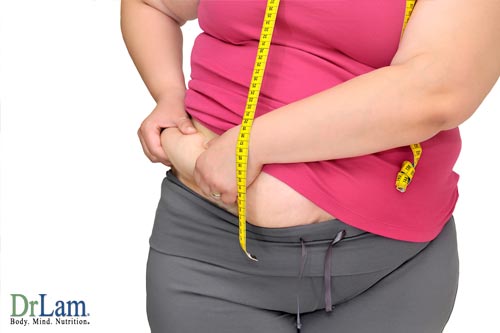 In the Framingham study, men and women consumed an average cholesterol intake of 700 mg and 500 mg per day. The average serum concentration of cholesterol for men and women, with a higher than average cholesterol intake, were found to be 237 and 245 mg/dl respectively. Subjects with lower than average intakes were found to be 237 and 241 mg/dl. The difference was statistically insignificant. The results also revealed that people who took 4 eggs per week (one egg provides 200mg cholesterol) had average serum cholesterol (193 mg/dl) the same as those who reported consuming only 1 egg per week (197 mg/dl). Clearly, dietary cholesterol in and of itself is definitely not the critical link to heart disease risks.
In the Framingham study, men and women consumed an average cholesterol intake of 700 mg and 500 mg per day. The average serum concentration of cholesterol for men and women, with a higher than average cholesterol intake, were found to be 237 and 245 mg/dl respectively. Subjects with lower than average intakes were found to be 237 and 241 mg/dl. The difference was statistically insignificant. The results also revealed that people who took 4 eggs per week (one egg provides 200mg cholesterol) had average serum cholesterol (193 mg/dl) the same as those who reported consuming only 1 egg per week (197 mg/dl). Clearly, dietary cholesterol in and of itself is definitely not the critical link to heart disease risks.
Olive oil is an excellent source of omega-3 fatty acid. It belongs to a class of fats called monounsaturated fats. These fats are good for your heart.
Monounsaturated fats lower total cholesterol and LDL cholesterol. While all types of olive oil are sources of monounsaturated fat, virgin olive oil contains a higher level of antioxidants, particularly phenols and vitamin E because it is less processed. Many studies have validated the use of virgin olive oil.
In one study, researchers confirmed that adults who consumed 25 ml or 2 tablespoons of virgin olive oil a day for one week showed less oxidation of LDL ("bad") cholesterol and higher levels of antioxidant compounds, particularly phenols, in their blood. This was because virgin olive oil not only lowered cholesterol levels but it also raised the resistance of LDL to oxidation because of its richness in oleic acid and antioxidants.
It is important to note that olive oil should not be used to deep fry food, as the high heat will change the structure of the oil. Olive oil is best used uncooked. Using olive oil or canola oil, both of which are high in monounsaturated fat, in stir-frying is also acceptable.
By now, it should be clear that fats are not as evil as they sound. There are good fats, and there are also bad fats. We must, therefore, avoid the bad fats and consume more of the good fats.
Different fats have different properties which are best suited for different uses. That is the take-home lesson.
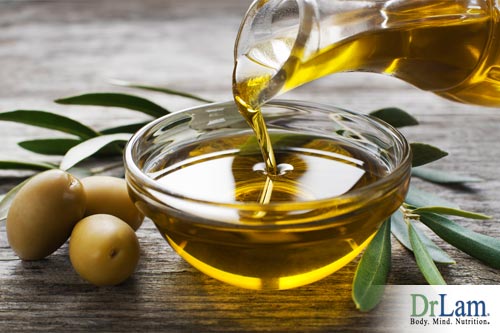 For low to medium heat stir-frying, use olive oil. Do not use under a high heat environment if you want to fight and win against the big fat lie.
For low to medium heat stir-frying, use olive oil. Do not use under a high heat environment if you want to fight and win against the big fat lie.The big fat lie is affecting you no matter what, so you should gather as much information as you can to counterbalance it. We are indeed living in - a "toxic food environment" of cheap fatty foods, large portions, and pervasive food advertising and sedentary lives. Consuming junk and fast foods, high in refined carbohydrates and saturated fat, is a way of life, including breakfast, lunch, dinner and snacks. These foods are often so filled with the worse kind of fats and help support the big fat lie is to the uneducated, trans-fat, that they are irresistible and uniquely fattening. Above all these, the modern generation does not have enough exercise from their daily lives. They seldom exercise or walk up stairs, nor do their children cycle to school or play outdoors as most of them will prefer to play video games and watch television.
Let us look at some of the Western world's favorite food to understand more about the big fat lie:
French Fries. It has been shown that French fries that are eaten by millions around the world every day contain alarmingly high quantities of acrylamide, a substance believed to cause cancer.
This report came from a study related to the big fat lie was carried out at Stockholm University jointly with Sweden's National Food Administration, a government food safety agency. The report explained that heating of carbohydrate-rich foods, such as potatoes, rice or cereals, formed acrylamide (a probable human carcinogen).
The research was concerning related components to the big fat lie, deemed so urgent and important that the scientists decided on the unusual step of releasing it to the press in July 2002 so as to warn the general public before the results were even officially published in an academic journal.
French fries sold at everyone's favorite fast-food restaurants such as Burger King and McDonald's contained about 100 times the 1-mcg/l maximum permitted by the World Health Organization for drinking water. (One milligram, or 0.001 grams, contains 1,000 micrograms). Furthermore, an ordinary bag of potato chips contained up to 500 times more of acrylamide using these same criteria as set by the WHO. This information certainly sounds very scary.
Fast-food French fries showed the highest levels of acrylamide among the foods tested by an independent agency, Center for Science in the Public Interest (CSPI). CSPI had tested, with large orders containing 39 to 72 micrograms. One-ounce portions of Pringles potato crisps contained about 25 micrograms, with corn-based Fritos containing half that amount or less. Regular and Honey Nut Cheerios contained 6 or 7 micrograms of the carcinogenic substance. Among the findings:
| Acrylamide in Foods | Micrograms per Serving |
|---|---|
| Water, 8 oz., EPA limit | 0.12 |
| Cheerios, 1 oz. | 7 |
| Tostitos Tortilla Chips, 1 oz. | 3 |
| Fritos Corn Chips, 1 oz. | 11 |
| Pringles Potato Crisps, 1 oz. | 25 |
| Wendy’s French Fries, Biggie, 5.5 oz. | 39 |
| KFC Potato Wedges, Jumbo, 6.2 oz. (est.) | 52 |
| Burger King French Fries, large, 5.5 oz. | 57 |
| McDonald's French Fries, large, 6 oz. | 72 |
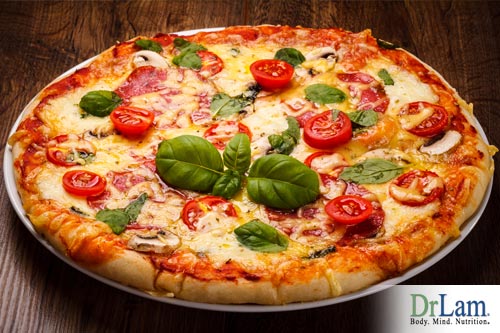 In learning about the big fat lie, we learn thatAcrylamide is colorless and crystalline solid in nature. It is possibly a medium hazard form of human carcinogen. It induces gene mutations and has been shown in animal tests to cause benign and malignant stomach tumors. Acrylamide is formed during the preparation of food especially at high heat (as in oven-baked or deep-fried).
In learning about the big fat lie, we learn thatAcrylamide is colorless and crystalline solid in nature. It is possibly a medium hazard form of human carcinogen. It induces gene mutations and has been shown in animal tests to cause benign and malignant stomach tumors. Acrylamide is formed during the preparation of food especially at high heat (as in oven-baked or deep-fried).
What French Fries contain:
Pizza. Pizza is one of man's favorite foods, especially among the children. Health scientists today are listing out the dangers of this favorite food that many people may not be pleased to know. Just a plain unadorned cheese pizza packs about a half a day's worth of saturated fats in a typical quarter-pie serving.
The true fact is that while most people would not take a second helping of a Quarter Pounder or Big Mac, they will reach for a second, third, or even a fourth slice of their favorite pizza without second thoughts, contributing to the big fat lie.
Two greasy slices of Pizza Hut's Stuffed Crust Pepperoni Lover's pizza contain more than 800 calories and about one day's worth of saturated fats and sodium. Double this amount and you will have reached your two-day's quota of saturated fats.
It is also wise to order a pizza with less cheese the next time you have your cravings.
Here are some practical guidelines to changing your patterns and proving your knowledge of the big fat lie:
To support your transition to health honesty and away from the big fat lie, you should also order plenty of green salads and stay clear of the typical side orders such as breadsticks, buffalo chicken wings, and cheesy bread.
Here is more about the big fat lie and here are some common foods and their fat contents that you can consider instead of French fries and/or pizza.
Food high in saturated fat: bacon, bologna, butter, cheese, chocolate, cream, cream cheese, fried foods, ice cream, lard, whole milk, shortening and stick margarine. Try to avoid all of these and keep the big fat lie in mind.
Food low in Saturated fat: avocado; fish (highly recommended, but only take cold-water and deep-sea fish like salmon or tuna); non-fat milk (not recommended because of its high allergenic content); nuts (highly recommended, especially when raw); peanuts (not recommended because of its high aflatoxin content); seeds (highly recommended); and free-range turkey and chicken white meat without skin, broiled or grilled (once a week). Consume food that is low in saturated fats for optimal health.
Food with no saturated fat: beans and vegetables are highly recommended. Candy, certain grains, pasta, soft drinks, hard candy, and sugar are not recommended. Keep reading about how to protect yourself from the big fat lie.
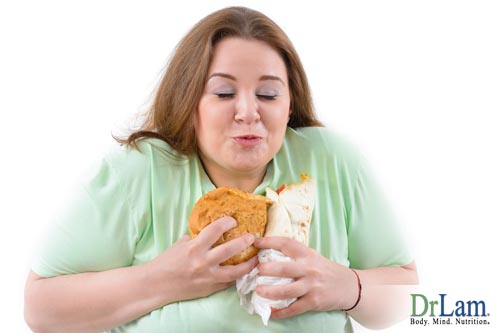 In the fight against the big fat lie, in the aging adult, we must look upon food like a drug. Excessive consumption of simple carbohydrates such as cakes and soda and starch over the past 20 years have created a carbohydrate addiction in 30 to 40 percent of the adult population. They crave carbohydrates, much like a heroin addict craves heroin. Most adults who are accustomed to a high carbohydrate diet simply cannot change and the big fat lie only encourages them to avoid fats.
In the fight against the big fat lie, in the aging adult, we must look upon food like a drug. Excessive consumption of simple carbohydrates such as cakes and soda and starch over the past 20 years have created a carbohydrate addiction in 30 to 40 percent of the adult population. They crave carbohydrates, much like a heroin addict craves heroin. Most adults who are accustomed to a high carbohydrate diet simply cannot change and the big fat lie only encourages them to avoid fats.
For optimum health, we must maintain a balanced diet of good fats, good proteins, and good carbohydrates, and ignore the big fat lie.
The best diet for you is dependent on your current dietary intake of carbohydrates not fats, as the big fat lie would suggest.
So, if you want to rid your life of the big fat lie, recognize that if you have not been eating excessive refined carbohydrates such as cakes and starchy foods such as pasta, in good health and close to ideal body weight, try the following: a high complex carbohydrate diet (45%), moderate protein (25%), and fat (30%) diet. The Mediterranean diet is a good model, with plenty of fresh salads, fruits and vegetables, fish, and olive oil. The healthy fats within it prove the truth about the big fat lie.
As a part of the big fat lie, you may have been convinced to eat more carbs. If you have been consuming a high carbohydrate diet (50% of dietary calories or more, and mostly in cakes, soda, pasta, and potatoes) for years, overweight, or have a hard time restricting your carbohydrate intake, consider yourself a Carbohydrate Addict. Over the next 1-2 years, slowly reduce your carbohydrate intake and increase your intake of good fat, while reducing protein as well. Switch to a diet consisting of 45% "good" fats (such as seeds, nuts, and cold water fish like salmon), 15% protein (enough to maintain neutral nitrogen balance and no more) and 40% of "good" complex carbohydrate (low-glycemic fruits such as apple and above the ground green vegetables). Instead of eating all 3 meals with the above proportion, try to contain your daily carbohydrate load to one meal, and limit it to a sixty-minute sitting. It is important to note that excessive proteins are not recommended in this case as they behave like carbohydrates when it comes to its insulin stimulatory ability. Normal people need only 1-2 gm/kg body weight of protein a day to maintain neutral protein balance ( the amount of intake is equivalent to the amount of output). As we now know, a high insulin level is the main culprit behind the high carbohydrate diet.
Here is a sample of what you should be taking:
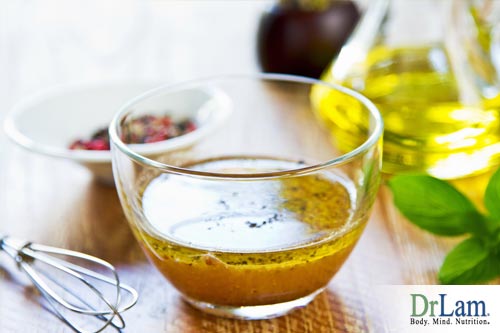
In learning the truth about the big fat lie, we find that fats are a necessary part of our diet. It is important to know what kind of fats to eat. The promotion of a low-fat diet in the past 20 years is radically oversimplified. The result is clear - a whole generation of rampant obesity. We need a thorough understanding of the kind of good fats and the kind of good carbohydrates needed to reverse this epidemic. In fighting against the big fat lie, good fats, such as olive oil, must be consumed in large amounts. Bad fats such as saturated fats from meat should be avoided. Good complex carbohydrates such as green leafy vegetables should be encouraged whilst bad simple carbohydrates such as cakes and sugar, together with starchy carbohydrates (though they are considered complex) such as potato, rice, and bread should be restricted. I hope that this article was able to shed some honest truth about the big fat lie.
Those who have been on a low-fat, high-carbohydrate diet for an extended time, should consider a diet high in good fat (45%), low protein (15%) and moderate complex carbohydrate (40%) for optimum health to combat the concepts taught to us through the big fat lie.
There is no direct correlation, but it is known that excessive core fat and triglyceride, a sign of Metabolic Syndrome, is often tied to sugar imbalances and afternoon slumps. So, when you are evaluating your overall health and weight, remember the big fat lie that you have been told and factor in all of the important things you learned about the big fat lie from this article to help you restructure your lifestyle. Say no more to the bi'g fat lie. Live a lifestyle that does not support the big fat lie. Share with your friends that truth about the big fat lie. Start changing your life today.